PRESENTATION
From Saturday March 30th 2009
Fundación PROA presents the second phase of Las comisuras de La Boca, an artistic proposition with works produced specifically for the PROA Café thought of by Karina Granieri y Julia Masvernat. In the first phase, during the months of March and April, a video program was presented (Gabriel Baggio, Vanessa Saimovici, Graciela Taquini, Leticia El Halli Obeid, Marco Paulo Rolla and Ivana Vollaro) together with a performance by Gabriel Baggio, Conversación.
In this second phase, the following interventions will be presented: Capital Cultural, by Alicia Herrero, and Los gestos textiles, by Julia Masvernat. The objective is to continue showing investigations related to the idea of nutrition “not only as alimentation, but also as conversations, transmissions, memories, accidents, currency, cultural goods and exchanges”, explain the project’s coordinators.
For a while now, Alicia Herrero has been developing a work with two recurring themes: the quotidian and the conversational. For this opportunity, her work Capital Cultural is formulated by a recompilation of images of related objects, which produces a new functional object: place-mats printed on paper, which will be used in the PROA Café. Her work proposes a reflection regarding the symbolic exchanges and the dimension of value and cultural goods.
The proposal Los gestos textiles, by Julia Masvernat, brings together a series of texts cut out of their original context. “There is no succession of symbols lined up one behind the other, its more like the work flirts with the architecture of the PROA Café, inventing new spectators”, explains Karina Granieri, the project’s coordinator. In this way a new text composed of cutout fragments on paper are suspended in the connecting space between the PROA Café and the PROA Library. “This new landscape of multiple voices, a remix of never ending supports, proposes open-ended senses: taste, smell, sound, hearing, speech, lived-in space”, explains Karina Granieri, coordinator of this second phase.
“In both proposals, there is a process with a deconstructive mood that begins with activating a razor-blade eye that cuts out the images, words and dispersed meanings, mapping out and interpreting a territory. In this way revealing the dynamics of the society and culture in which we live”, adds Granieri.
Alicia Herrero
Capital Cultural, 2009
Offset print. Original collage
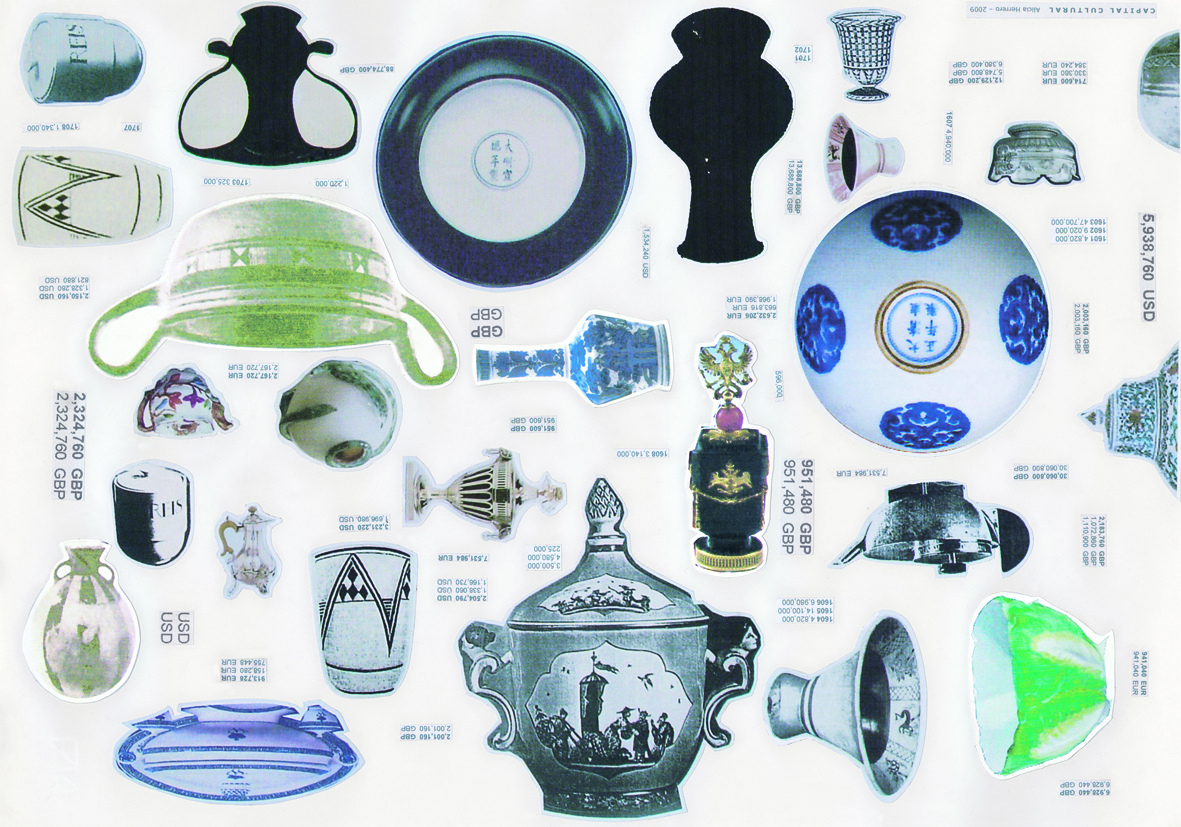
Alicia Herrero works within diverse supports and practices. Her various projects have been seen in: dispari&dispari project (2009); Van Abbemuseum (2008); Mirta Demare Gallery (2008); 4th Göteborg Biennial for Contemporary Art Rethinking Dissent (2007); La Bienal del Fin del Mundo (2007); Museo de Arte Contemporáneo de Posadas (2006); MACRO (Museo de Arte Contemporáneo de Rosario) (2005); NGBK (Neue Gesellschaft für Bildende Kunst) (2003); Shedhalle (2003); Boijmans van Beuningen Museum (2001/02); among others. She carries out Magazine in situ in different cities and coordinates the Investigation Laboratory in Contemporary Artistic Practices (C.C.R.Rojas, Buenos Aires).
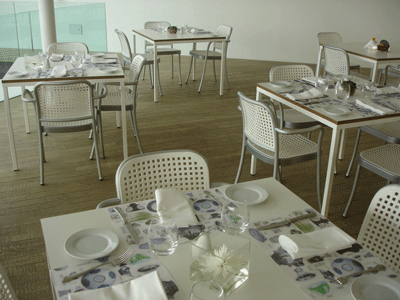
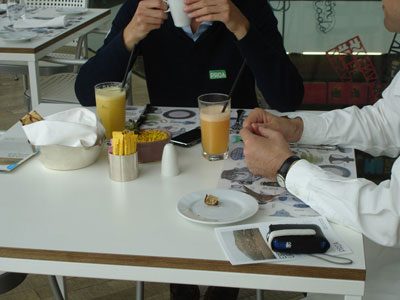
Julia Masvernat
Los gestos textiles, 2009
Cutout paper
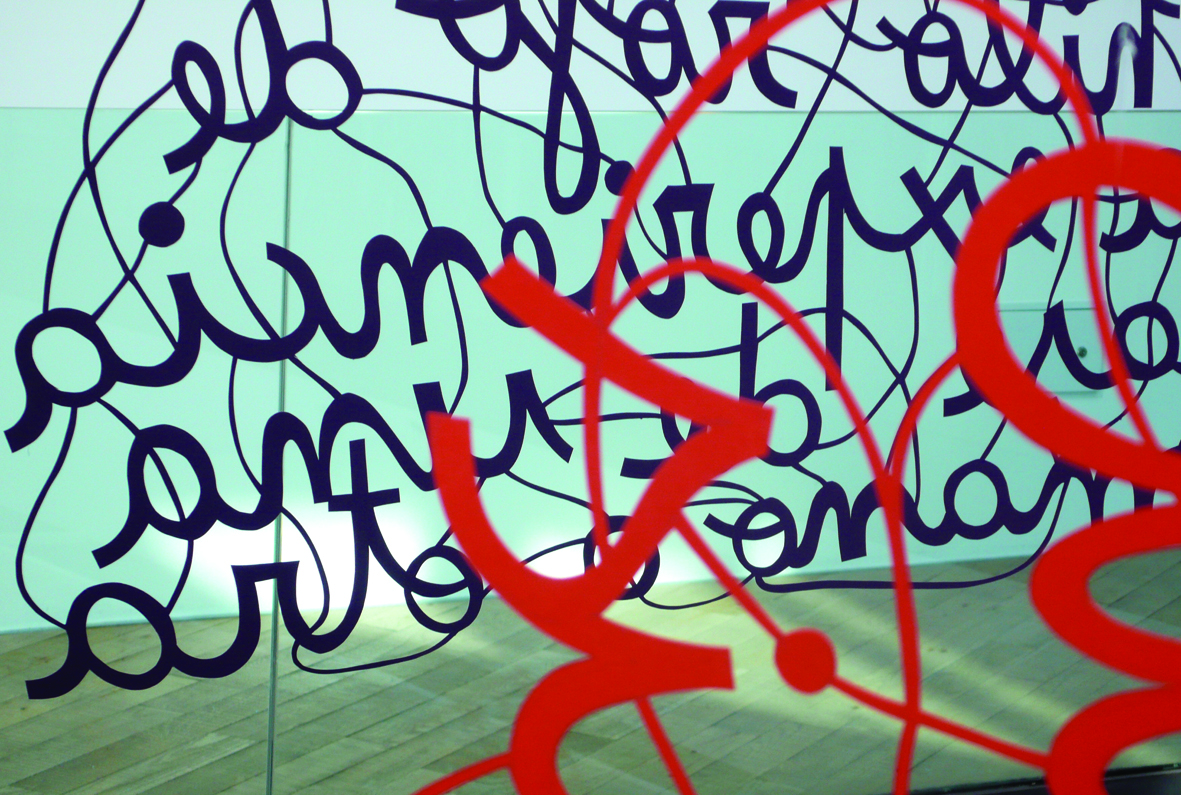
Artista visual y diseñadora gráfica. Su trabajo se desarrolla en diversos medios y técnicas: objetos en madera, instalaciones de papel calado, proyecciones de sombras, juegos interactivos audiovisuales, plataformas web. La relación íntima con los materiales y sus transformaciones (de forma y de sentido) es una temática recurrente en sus proyectos. Expuso sus obras en diversas muestras grupales e individuales (C.C.R.Rojas, C.C. Recoleta, CCEBA, arteBA, VideoBrasil, Fundación Telefónica, fundacion pROA, Galería BM). Participó en la beca Rojas-UBA-Kuitca 2003-2005. Formó parte del colectivo Terraza y del Taller Popular de Serigrafía. Es docente universitaria en arte electrónico y dicta un taller de arte audiovisual para jóvenes.
Por Karina Granieri
Necesito estas palabras escritas
Arthur Bispo do Rosario
Arrugamos el texto, al mismo tiempo que lo fracturamos por medio de la lectura y la escucha. Lo replegamos sobre sí mismo. Relacionamos entre sí los pasajes que se corresponden. Cosemos juntas las partes dispersas, extendidas, divididas sobre la superficie de las páginas o en la linealidad del discurso: leer un texto es reencontrar los gestos textiles que le han dado su nombre.
¿Qué es lo virtual? Pierre Lévy
En el trabajo de Julia Masvernat hay un rumor de enunciación de todo lo que está en el mundo… para que el hilo rojo de la experiencia pase de una mano a otra, la frase es de Walter Benjamin. Citar las fuentes podría ser un camino, pero no creo que se trate de eso hoy. Los textos que componen la obra de Julia en muchos casos son frases que están hechas de palabras ajenas. Son nombres propios. Sentir lo ajeno como propio, una operación que remite al copy left, al uso comunitario de las palabras, saludable polisemia que aún resiste a los procesos de naturalización de sentido.
Los gestos textiles convocan a un nuevo texto, a un nuevo paisaje de voces múltiples: remix de fuentes verborrágicas que pueden desbordar hasta el silencio. Donde la perspectiva pierde la razón y se fractura, proponiendo sentidos abiertos: el gusto, el olor, el sonido, la escucha, el habla, el espacio vivenciado, un intento de conversaciones prolongadas. Las voces gritan y escuchan, peligros y tesoros dibujados de la boca al oído.
Todas las frases, palabras, fragmentos, tienen un origen, un devenir. Fueron encontradas, seleccionadas, coleccionadas por su presencia poética y conceptual, por su valor histórico, por su reserva de datos, y es de infinitas lecturas y escuchas que este curso es posible. Como si los textos le dieran a la artista órdenes, órdenes que se trasladan de la lectura a la escritura calada en papel, órdenes de letras manuscritas con predominio de curvas que anudan y evocan el grafismo de nuestras primeras escrituras formales.
Las textos están aquí y ahora esperando un intercambio, una actualización, un detenimiento tan preciso y accidentado como el movimiento que marca el ritmo de la lectura en el espacio aéreo de un hueco, un hueco institucional. No hay sucesión de signos alineados unos detrás de otros, la obra coquetea con la arquitectura e inventa miradores, una construcción suspendida en un instante congelado. Frágil artesanía monumental que se prueba a sí misma, que prueba su fuerza, sus campos de fuerzas.
Nota: lo señalado en bastardilla corresponde al repertorio de textos de la obra.
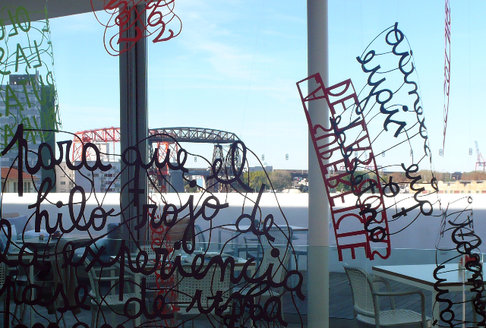
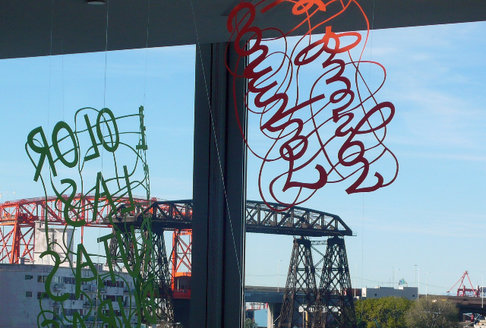
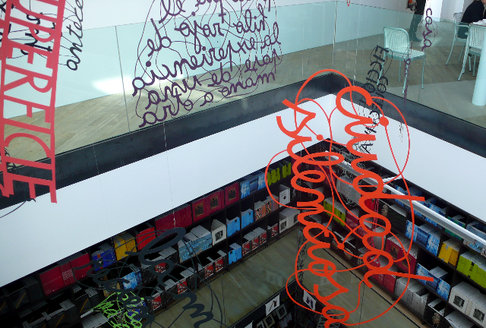
Julia Masvernat is a visual artist and graphic designer. Her work is developed through various medias and techniques: wooden objects, cutout paper installation, shadow projections, interactive audiovisual games, web platforms. The intimate relationship with the materials and their transformations (of form and meaning) is a recurring theme in her projects. She has exposed works in various individual and group shows (C.C.R.Rojas, C.C. Recoleta, CCEBA, arteBA, VideoBrasil, Fundación Telefónica, Fundación PROA, Galería BM). She has participated in the Rojas-UBA-Kuitca scholarship 2003-2005. She took part in the group works Terraza and the Taller Popular de Serigrafía. She is a university professor in electronic art and gives a youth-oriented workshop in visual arts.
The commisures of La Boca - PART ONE
About The commisures of La Boca
Las comisuras de La Boca (The commissures of La Boca), an artistic proposal produced especially for the PROA Café, coordinated by Karina Granieri and Julia Masvernat.
Las comisuras de La Boca brings together a program of videos and interventions that unfold into images, texts, words, and investigations around the idea of nutrition. “But not only as alimentation, also as textile gestures: conversations, transmissions, memories, accidents, Pero no sólo en función de la alimentación, sino también como gestos textiles: conversaciones, transmisiones, recuerdos, accidentes, use value, cultural goods and exchanges”, explain the coordinators.
The project, which intercepts the space and creates playful and reflexive moments, consists in two stages, in the way of a work in progress. This first stage includes a series of videos projected in the PROA Café, and a performance by Gabriel Baggio on the renovated terrace. The videos are, for the most part, set in domestic environments in which the camera documents and exteriorizes and an interior language, a dialogical event.